Old Dresden
Another trip down memory lane to the city once known as "the Florence on the Elbe"
I’m feeling a wee bit inspired by these “old” images of Central Europe many, many decades ago.
So, today I’ll take you to “old Dresden”, on of the region’s (former) gems in terms of its architecture. Here’s a bit from Wikipedia’s entry to set the scene (references omitted):
Dresden is the second largest city on the River Elbe after Hamburg. Most of the city's population lives in the Elbe Valley, but a large, albeit very sparsely populated area of the city east of the Elbe lies in the West Lusatian Hill Country and Uplands (the westernmost part of the Sudetes) and thus in Lusatia. Many boroughs west of the Elbe lie in the Ore Mountain Foreland, as well as in the valleys of the rivers rising there and flowing through Dresden, the longest of which are the Weißeritz and the Lockwitzbach. The name of the city as well as the names of most of its boroughs and rivers are of Sorbian origin.
Dresden has a long history as the capital and royal residence for the Electors and Kings of Saxony, who for centuries furnished the city with cultural and artistic splendor, and was once by personal union the family seat of Polish and Lithuanian monarchs. The city was known as the Jewel Box, because of its Baroque and Rococo city centre. The controversial American and British bombing of Dresden towards the end of World War II killed approximately 25,000 people, most of whom were civilians, and destroyed the entire city centre. After the war, restoration work has helped to reconstruct parts of the historic inner city.
I’ve elected to leave the link to the Wikipedia entry on the horrifying firestorm that destroyed the city once known as “the Florence on the Elbe”. I’m not going to get into any debates about these events: there is a comprehensive report by an official historical commission (in German), and here is an account by a British POW who stood at the receiving end of the onslaught.
That’s it by way of an introduction, let’s check out some of the picture postcards from before the Second World War.
Dresden Before its Destruction on 13 Feb. 1945
Above, a collage, obviously dating from after the Second World War; although it was never mailed, it shows some of the main sights we’ll check out below.
This “greetings from Dresden” has a Czech (I think) message, it was sent before the First World War, and it was sent to Vienna (curiously, to around the corner from where I grew up).
Above, a “view of Dresden” from the eastern banks of the Elbe, on a postcard mailed in 1937; below, the Old Market square, mailed on 18 July, but without a clearly identifiable date.
Above, the Catholic Court Church (undated, but the reverse indicates it’s from before Feb. 1945); below, the former stables’ court (Stallhof) in the Johanneum (mailed in the 1920s).
Bonus Picture: The Frauenkirche before 1945
The above is a photograph I found among the picture postcards; there’s no date on its reverse, but the dark-grey colour of the façade indicates it was taken before the destruction of Dresden. (If you click on this link to the Frauenkirche’s Wikipedia entry: the few dark-grey blocks that are seen are the original ones, the light-grey ones are newer.)
Please let me know if you’d like to see some post-1945 postcards, too?



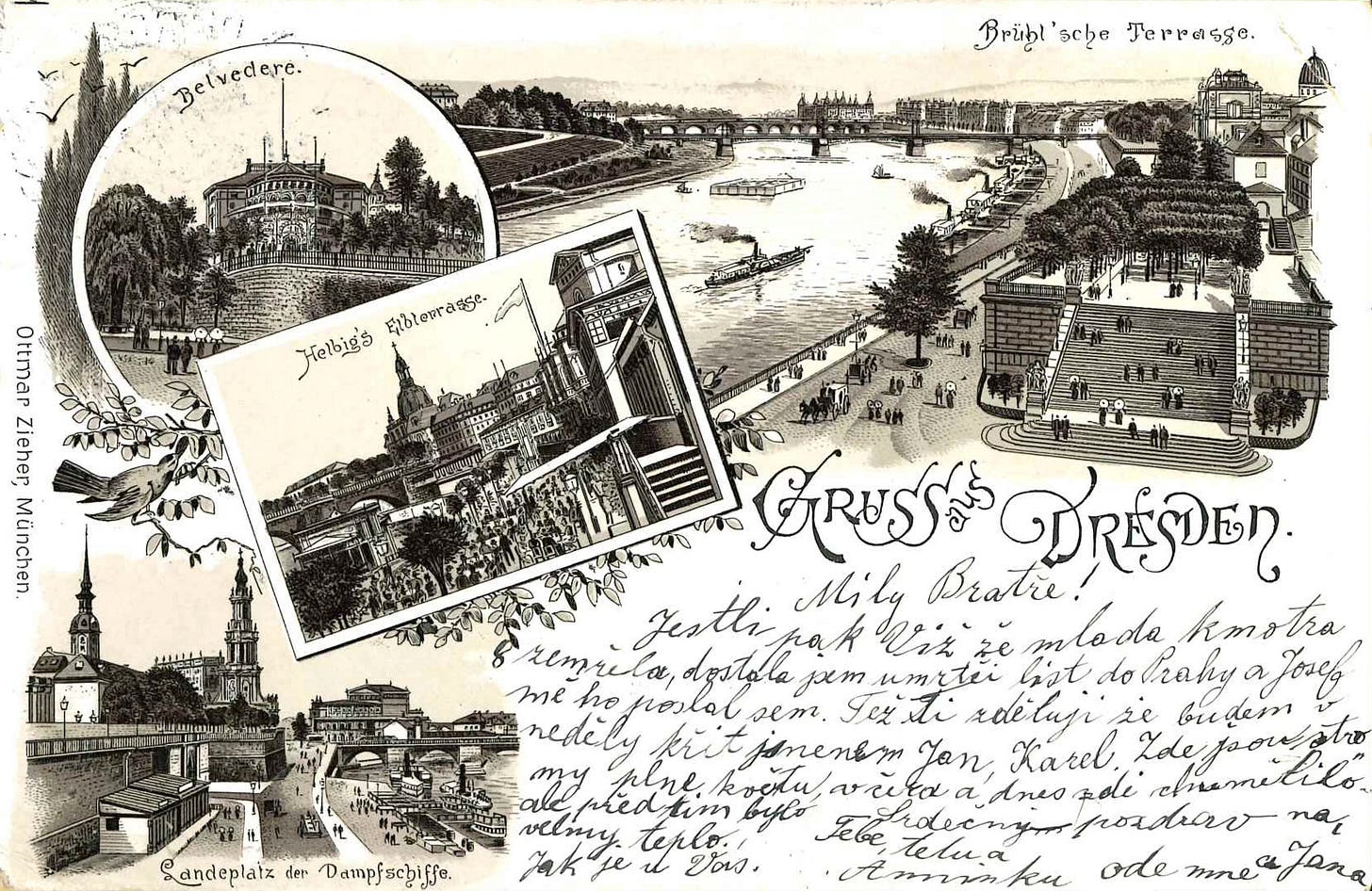
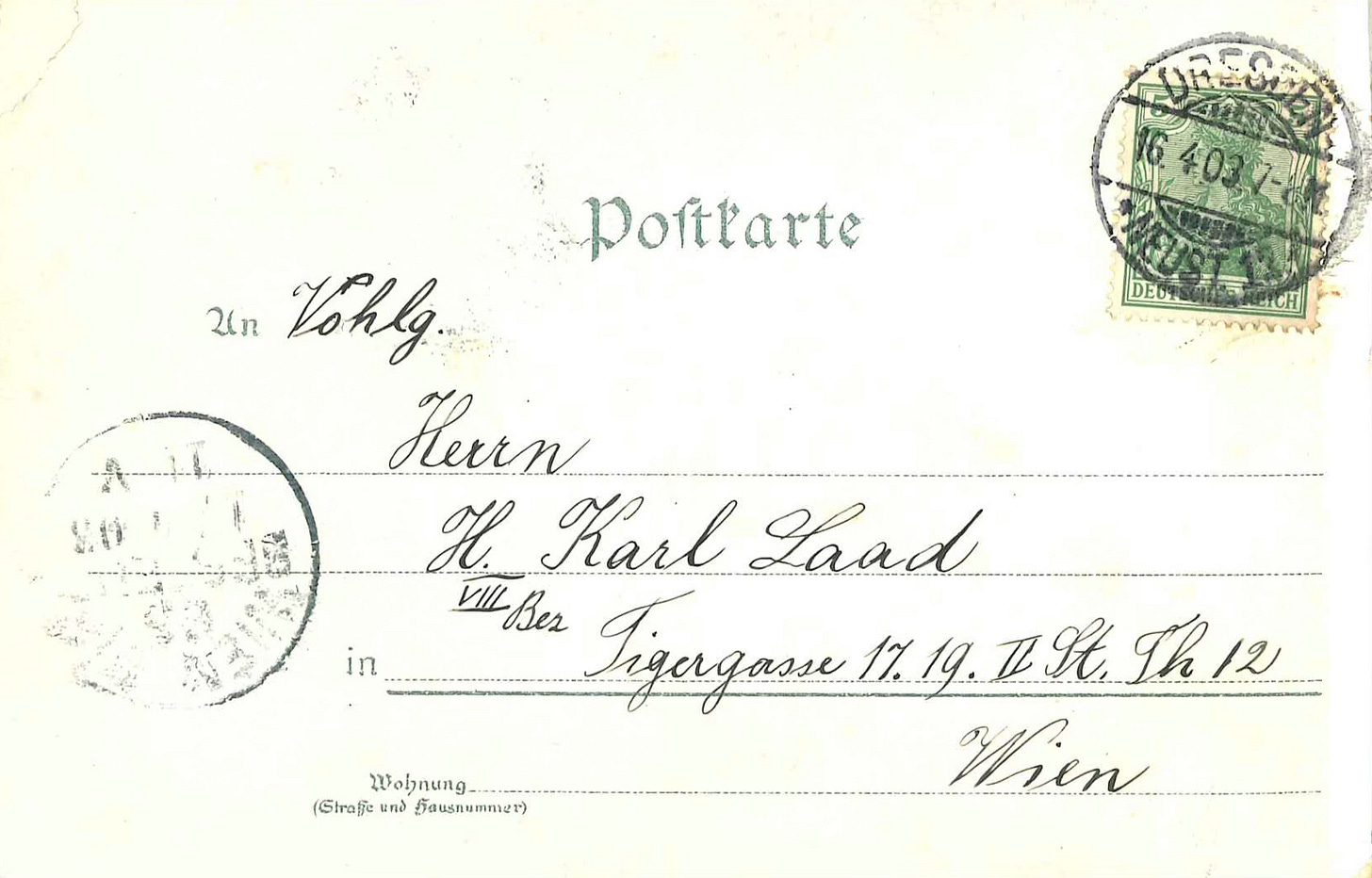

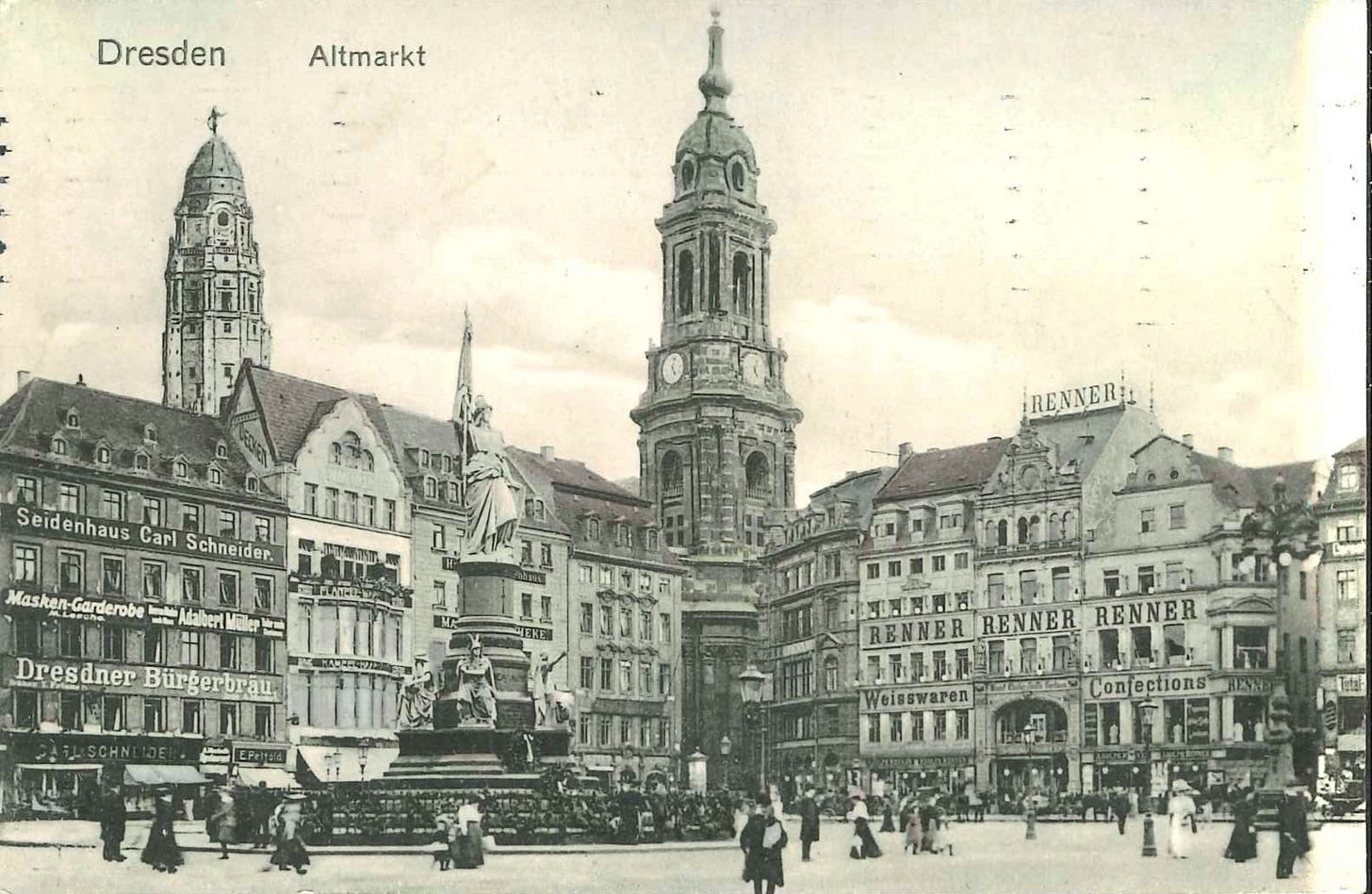
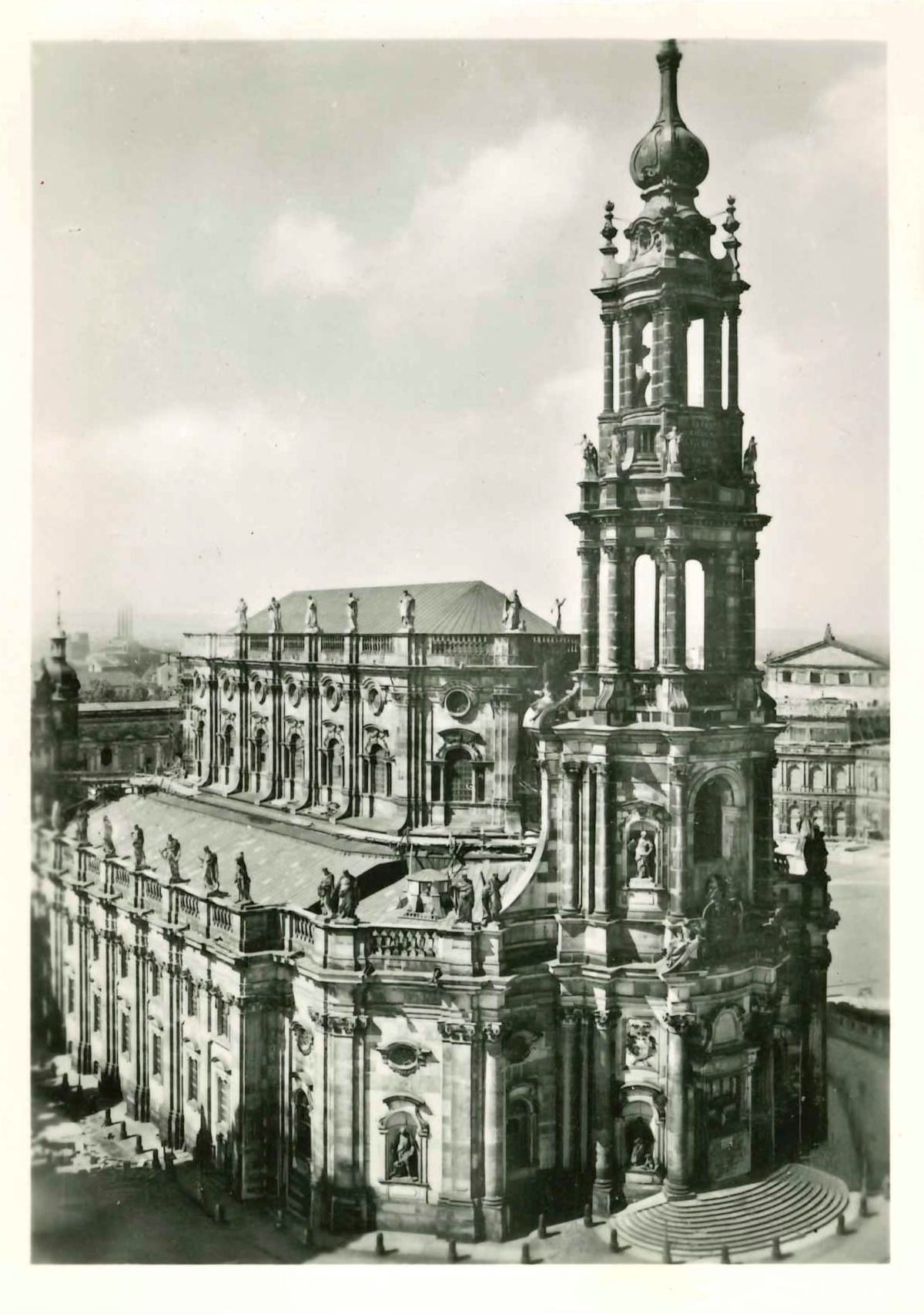
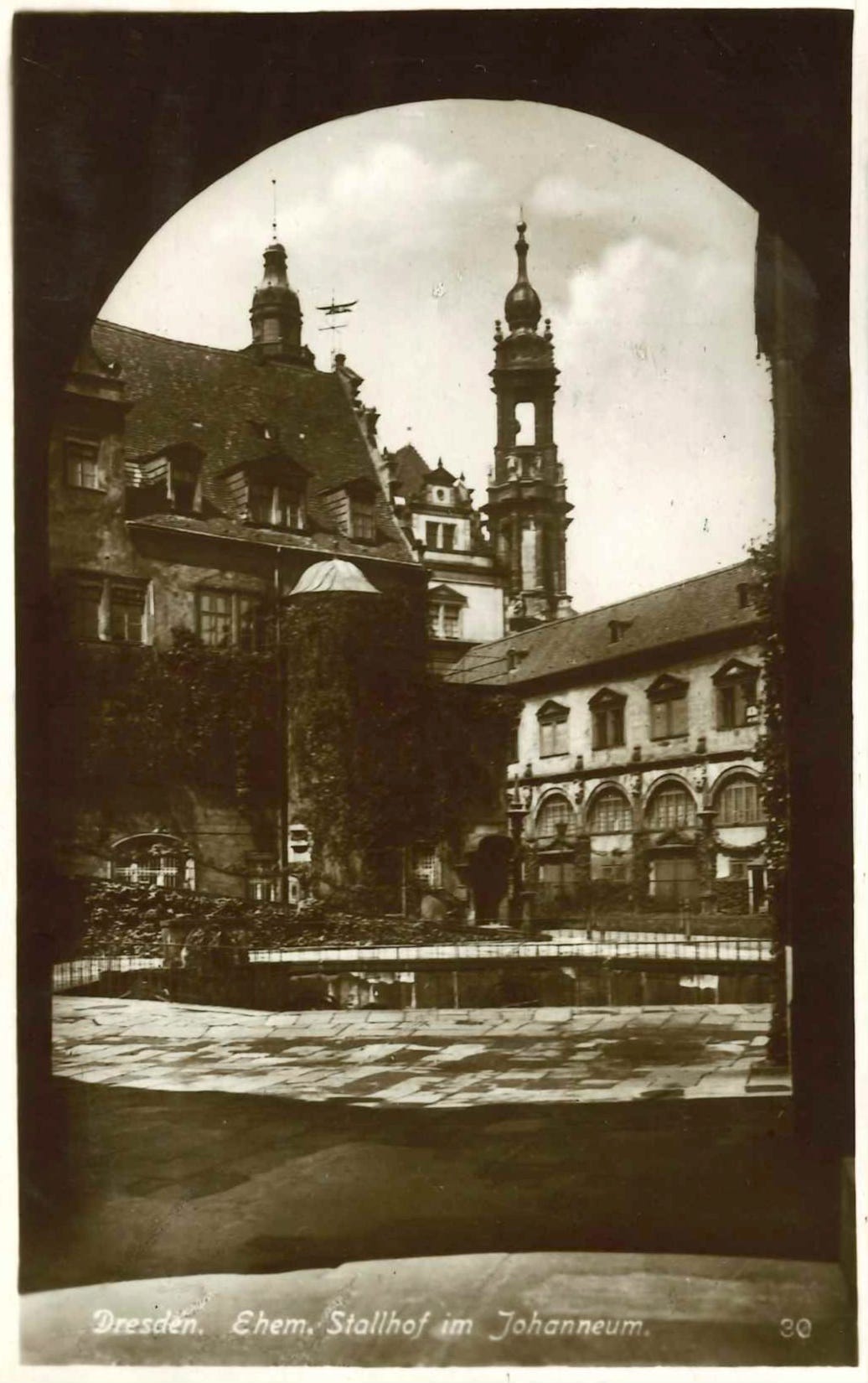

Beautiful, stunning jewel of a city. What happened there was so horrific it boggles the mind. The stories of the 'clean up' are so horrific I cannot repeat them. Thank you for sharing the beautiful cards.
Definitely want after. Glutton for punishment